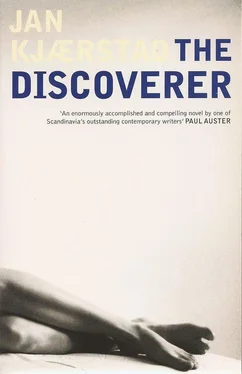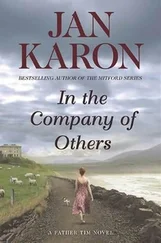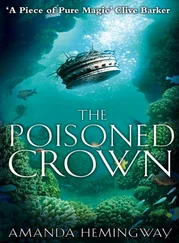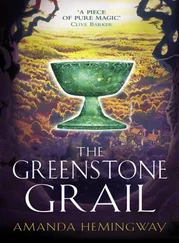Jan Kjaerstad - The Discoverer
Здесь есть возможность читать онлайн «Jan Kjaerstad - The Discoverer» весь текст электронной книги совершенно бесплатно (целиком полную версию без сокращений). В некоторых случаях можно слушать аудио, скачать через торрент в формате fb2 и присутствует краткое содержание. Год выпуска: 2009, Издательство: Arcadia Books, Жанр: Современная проза, на английском языке. Описание произведения, (предисловие) а так же отзывы посетителей доступны на портале библиотеки ЛибКат.
- Название:The Discoverer
- Автор:
- Издательство:Arcadia Books
- Жанр:
- Год:2009
- ISBN:нет данных
- Рейтинг книги:5 / 5. Голосов: 1
-
Избранное:Добавить в избранное
- Отзывы:
-
Ваша оценка:
- 100
- 1
- 2
- 3
- 4
- 5
The Discoverer: краткое содержание, описание и аннотация
Предлагаем к чтению аннотацию, описание, краткое содержание или предисловие (зависит от того, что написал сам автор книги «The Discoverer»). Если вы не нашли необходимую информацию о книге — напишите в комментариях, мы постараемся отыскать её.
The Discoverer — читать онлайн бесплатно полную книгу (весь текст) целиком
Ниже представлен текст книги, разбитый по страницам. Система сохранения места последней прочитанной страницы, позволяет с удобством читать онлайн бесплатно книгу «The Discoverer», без необходимости каждый раз заново искать на чём Вы остановились. Поставьте закладку, и сможете в любой момент перейти на страницу, на которой закончили чтение.
Интервал:
Закладка:
The last period of that same day finished, incidentally, with this tireless mentor of so many young and angry, but enquiring, minds running an uncommonly chalky hand through his hair and making the following announcement: ‘Tomorrow I’m going to tell you about Maya. This may change your lives.’ Now that was how a school day ought to end. Jonas could hardly wait, he imagined that this Maya had to be some really extraordinary girl. But despite Mr Dehli’s warning he was in no way prepared for the fact that she truly would change his life.
Girls frequently took Jonas by surprise. He was, for example, most definitely not out girl hunting one Saturday morning two years later when he wandered into the National Gallery and heard music playing. He and Leonard Knutzen were there to check whether it might be possible to use the Antiquities Room, a gallery claustrophobically full of sculptures, in one of Leonard’s — or rather: Leonardo’s — new cine films, a work which, at the manuscript stage, was looking exceptionally promising, wanting only just such an unusual location to make it absolutely superb. Jonas was at high school, the Cath, by this time; he did not see as much of Leonard any more, but he still lent a hand with shooting films when the occasion arose — films which, according to Leonard, would do for Oslo what ‘the new wave’ had done for Paris and, before that, the ‘neo-realists’ had for Rome, thanks to his discriminating choice of locations. So now and then Jonas would accompany Leonard on his walks around the Norwegian capital in search of symbolic advertising signs on gable ends, dockland areas populated with particularly grim-looking cranes, decoratively tiled entranceways, statues which looked good in pouring rain, parks lit by lamps with metaphysically dull surfaces, staircases which split into two. According to Leonard, the Antiquities Room at the National Gallery was the perfect place with which to illustrate the weighty legacy of history. But Jonas did not join him among the Greek and Roman statues, because he had caught the strains of beautiful — or sweet — music filtering down from the first floor, and followed the sound. It was coming from the room containing the best-known paintings from the National Romantic period: works by Fearnley and Cappelen, Balke and J.C. Dahl — and back then also Tidemand and Gude.
In the centre of the room was a string orchestra. They were playing Tchaikovsky’s ‘Serenade in C-major’. But even more captivating, for Jonas, than the music was the sight of a girl sitting in the front row, playing the violin and, in the absence of a conductor, directing the others with nods of her head and raised eyebrows. She was in the parallel class to his at the Cath. She had caught his eye mainly because he had seen her carrying a square guitar case. And if this surprised him, then he had been even more impressed to find that it contained a red and white twelve-string Rickenbacker, identical to the one which George Harrison had played in the first Beatles film. At a meeting of the school debating society she had rigged up an amp and played a couple of instrumental numbers so brilliantly and with such feeling that everyone there had been completely knocked out. He asked around after this, found out a bit about her. Sarah B. was her name and she played in a girl band, one of the few which would, in fact, attract some — well-merited — notice at the time; and in later years she would become even better known as an ambassador for the arts in Norway with her electric twelve-string guitar, a pioneer within what became known as world music, a blend of folk airs, jazz and timeless melodies — an echo perhaps of the house in which she had grown up, designed by an eccentric father: a mansion bristling with spires and turrets and stylistic features drawn from every corner of the globe. Jonas had only ever seen her playing an electric guitar, he was not at all prepared for the sight of her sitting here in a gallery, dressed in a long, elegant dress, rather like a throwback to the previous century, and with a violin in her hands. It would be some years yet before she came down in favour of the guitar as her first instrument.
It was an impressive sight. These young people, in the most fascinating of all the fascinating rooms in the National Gallery; romantic music performed in a gallery full of marble busts and gilded frames, glistening oil paintings of moons half-hidden behind dramatic cloud formations and wrecks being relentlessly beaten against sharp rocks. All the members of the orchestra were elegantly dressed, the boys in dark suits, the girls in long dark-blue frocks of various design, and with their hair up. All were possessed with that elation and ardour only found in young musicians who have just reached the stage where they can master any piece of music. There was an exuberance and a passion in their playing, in the tossing of their heads, the flaring nostrils, the glances they exchanged, that you never saw in an established orchestra consisting of older, experienced musicians. To Jonas they all looked as though they were in love. As though this wholehearted, fiery performance was merely the foreplay to some steamy, feverish lovemaking. He could not tear his eyes away from Sarah. She made a natural focal point with her theatrical, but at the same time natural arm movements. Jonas felt particularly drawn to her hands and fingers; one had the impression that she could have done anything with them, produce sound from a stone. And as he watched, as she kindled and sustained a wonder in him and in the other museumgoers who stopped short then sank down, entranced, onto the chairs set round about, he thought what a rare delight it would be to feel those graceful fingers on the back of his neck, running through his hair.
The paintings gave added resonance to Tchaikovsky’s serenade, the music lent a new glow to the canvases on the walls. Balke’s pale images of the North Cape and the lighthouse on Vardø positively shimmered . Jonas ran his eye over motif after motif, over mountains, glaciers and waterfalls, cog-built farmhouses and milkmaids in traditional costume, menhirs and herds of wild reindeer. It may even have been that Jonas saw the twenty-odd paintings in the room as forming a frieze illustrating Norway itself: an impression so powerful that — yes, why not — he actually began work on his television series Thinking Big right here.
And speaking of that mammoth television production: we have already touched on Jonas Wergeland’s schooldays, so something ought also to be said about the final and by far the most surprising phase of his education, a brief, but momentous apprenticeship on which he embarked towards the end of his time as an announcer on NRK television.
Having abandoned his original, high-flying plans — behind him lay several disheartening years at university and college — Jonas Wergeland considered himself lucky to have found a job in which his talent did not trouble him, where he could, in fact, in all likelihood, have buried it for good and all. But since he and Margrete had been together — he was inclined to say: because of Margrete — an ambition had begun to stir in him once more. He wanted to make television programmes himself. In the early eighties, Jonas Wergeland made the leap from announcer to programme-maker, moved by a desire to try to dive, as it were, from the surface down into the depths. When the NRK bosses agreed to his request he packed his suitcase, with Margrete’s blessing, and left the country. If one did not know better, one might think that he had had second thoughts, that he was running away from his big chance.
Later, all manner of rumours went the rounds — prompted mainly by the acrobatic, televisual feats Wergeland performed — about where he had been and what he had done. Some people affirmed that the original idea discernible behind all of Wergeland’s programmes could only be ascribed to his having been inspired by Sufism during a visit to Samarkand — an assertion which also appeared in print in a serious article. Others maintained, with all the confidence of insiders, that he had been sitting at the feet of the celebrated film director Michelangelo Antonioni. There were even a few who, in the wee, small hours in some bar, could be heard to mumble something about a Mexican woman by the name of Maya. None of these more or less mythical accounts came anywhere close to the truth. Over the years, to the question regarding what had led up to his epoch as a programme-maker, Wergeland honed an honest, if cryptic reply which not uncommonly so nonplussed his interlocutor that he or she asked no more questions: ‘I got to the top by lying on my back.’
Читать дальшеИнтервал:
Закладка:
Похожие книги на «The Discoverer»
Представляем Вашему вниманию похожие книги на «The Discoverer» списком для выбора. Мы отобрали схожую по названию и смыслу литературу в надежде предоставить читателям больше вариантов отыскать новые, интересные, ещё непрочитанные произведения.
Обсуждение, отзывы о книге «The Discoverer» и просто собственные мнения читателей. Оставьте ваши комментарии, напишите, что Вы думаете о произведении, его смысле или главных героях. Укажите что конкретно понравилось, а что нет, и почему Вы так считаете.












